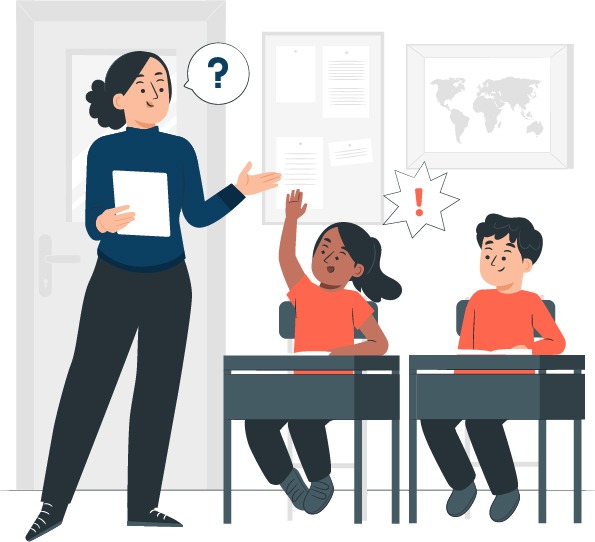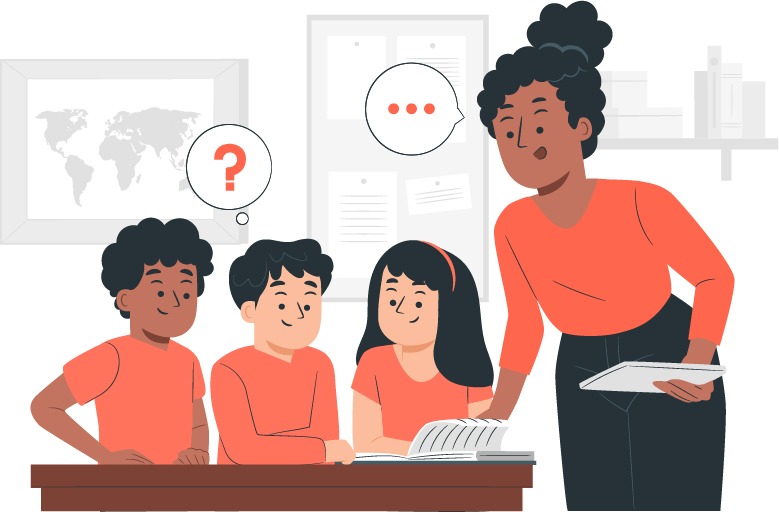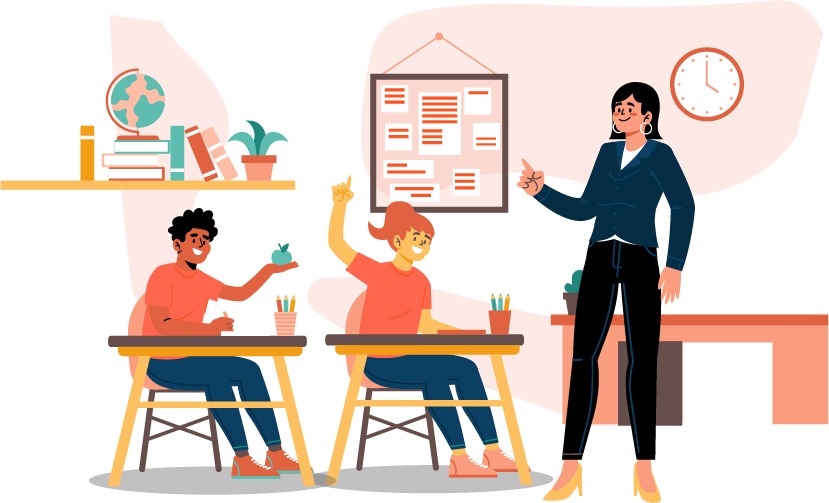Just like riding a bike starts with training wheels, teaching a large class begins with a little practice in teaching a smaller class. Microteach provides a safe space for student teachers to deliver a short session to showcase the skills, understanding and knowledge of a specific subject/topic before taking on a full classroom.
In this blog, we are going to mention these routes and tell you how you can pursue your teaching dream without obtaining a degree.
Key Takeaways:
- Microteaching is a core requirement of Level 3 AET, providing hands-on teaching practice through a recorded session, peer observation, or workplace delivery.
- Microteaching enhances teaching skills by focusing on key techniques, enabling trainees to refine lesson planning, classroom engagement, and instructional strategies.
- Constructive feedback and reflection are essential, helping trainee teachers identify strengths, improve weaknesses, and apply effective teaching methods.
You might assume that teaching is a simple task involving transferring knowledge to students, but in reality, it’s just the tip of the iceberg. It involves multiple teaching techniques, methodologies and strategies to teach a classroom effectively.
And microteach will help teachers reach their full potential to better meet the needs of students.
Notably, completion of a microteach session is a mandatory practical requirement for those pursuing a Level 3 Award in Education and Teaching.
In the following blog, we have explained everything you need to know about microteach before you enrol on AET:
Microteach and L3 AET
Microteach is a short teaching session designed to hone aspiring teachers’ skills and prepare them for the classroom.
It is a crucial part of this Level 3 Award in Education and Teaching qualification as it’s a practical requirement for learners.
Level 3 Award in Education and Teaching has three units in total; units 1 & 3 are theory-based, however, unit 2 requires learners to deliver a microteach session to demonstrate their teaching skills.
What is the Importance of Microteach?
Level 3 Award in Education and Training is an initial teacher training qualification for those who wish to pursue a career in teaching. Therefore, this requirement – microteach – is added to the qualification so learners can develop or polish their teaching/training skills.
It can benefit learners in multiple ways, such as:
- Learners can plan, teach or train better within a specific time frame.
- They can use and apply new teaching methodologies and pedagogies.
- Furthermore, instant feedback allows them to reflect upon their sessions and areas of improvement.

What are the Different Options to Deliver a Microteach Session?
There are three different delivery methods of the microteach session as part of the Level 3 Award in Education and Training (AET) assessment. These different methods provide flexible approaches to learners, allowing them to complete the practical requirement through the best suitable method.
Option 1 – Video Submission: Through the first option a one-hour teaching session is delivered to the learners. This session must be recorded and submitted for the assessment process. This method is suitable for learners who prefer independent teaching experience and want to demonstrate their teaching skills in a structured teaching environment.
Option 2 – Live Micro-Teach Session: In this option, the learner will participate in the delivery of a 15-minute peer teaching session to a small group of learners and observe other participants for 45 minutes to meet the practical requirement of full one-hour micro-teach session. This method encourages collaborative learning, allowing learners to gain insight from different teaching styles and enhance their practices.
Option 3 – Micro-Teaching with a Mentor: This option allows learners to conduct a one-hour micro-teach session in their workplace or professional environment, which will be observed by a mentor, supervisor, or assessor. For this purpose, the mentor must possess relevant qualifications and experience in the field. This method is particularly advantageous for those learners who are already engaged in a training or educational role, as it enables them to incorporate their micro-teach session into their own professional context.
Each of the three methods provides learners the chance to demonstrate their teaching abilities and refine their teaching methods.
How Does Microteach Work?
Microteach includes one trainee teacher, a group of students being taught and one or more supervisors/instructors/mentors to observe the session and provide feedback.
The opportunity allows them to teach and apply different techniques before they put them into practice. A few objectives of microteach include the following:
- To plan, prepare and deliver the training effectively
- To apply the right teaching skills
- To demonstrate and practice teaching strategies and methodologies
- To enhance the knowledge and understanding of future teachers
- To try new teaching methodologies, techniques and strategies
- To receive constructive feedback
- To build confidence
- To improve student learning and engagement
Although we have mentioned these objectives, how can you achieve these and ensure your microteach session goes seamlessly?
Below, we have mentioned essential steps of microteach to help you nail your session.

What are the 5 Steps of Microteach?
The five steps of microteach are planning, preparation, microteach, reflection and feedback.
Here is a breakdown of each step in detail:
Planning
Before your microteach session, you must define your goal and plan your session. One of the biggest mistakes learners make their lesson plan does not include any class interaction or participation. Therefore, planning is the most important part of the microteach session.
Plan activities that are engaging and that best suit your audience and involve teaching styles that match their learning styles. For instance, you can use animation, time-lapse videos or any other visual aid.
Note: At Britannia School of Academics, we provide a sample lesson plan template on Moodle for our learners.
Preparation
For this step, you must gather or design the material required to deliver the session; e.g. PowerPoint presentation or videos. Then try rehearsing your lesson plan with family or friends in order to clarify your concepts, pacing or engagement.
Microteach/Delivery
This is the most crucial step – to deliver the lesson in order to polish your teaching skills. Regardless of the three options you choose for your microteach session delivery, make sure you follow your lesson plan and use the planned strategies.
Keep your students engaged by asking questions or conducting activities, making sure learning stays fun yet engaging.
Feedback
This step involves receiving constructive feedback from your supervisor or instructor. Usually, the feedback focuses on the skills you attempted to enhance during the session, which ultimately aids in identifying your weaknesses and areas for improvement. For this, a detailed Microteach Observation form is used by the observer/assessor, a template for which is also provided by Britannia School of Academics.
If you select Option 1 or 2, you will receive feedback from our assessor. And if you choose Option 3, your assessor will be required to complete the Microteach observation form and submit their documents for approval prior to the microteach session.
Furthermore, this feedback will be used to complete Task 5 of Unit 2 which is based on reviewing the effectiveness of your delivery.
Reflection
Once the session is delivered and you have received feedback from your assessor, reflect on how it went. Make detailed notes on what went well and what needs to be improved. It also helps if you note down opinions and feedback provided by your learners during the session on how you could have done better, and then reflect on it in your Task 5 assignment of Unit 2.

What are the Aspects of Microteach?
Microteach focuses on multiple aspects of the development of teachers through microteach:
Focus and Polish One Skill at a Time
The primary focus is on honing one skill at a time. Aspiring teachers must master one skill and then move forward to the next.
One of the core strengths of microteaching is its laser focus on a single skill at a time.
For example, a trainer looking to improve their questioning skills in lectures can use a microteaching session to develop effective open-ended questions and assess student comprehension through their responses.
This focused practice helps the trainer improve their questioning abilities and get feedback before using them in a larger classroom setting.
Break Down the Lesson in Chunks
It would be overwhelming for teachers if they plan to deliver the whole lesson instead of in chunks. Therefore, it is best to choose a short and specific concept and deliver it in chunks.
For instance, instead of teaching the whole water cycle in a go, teachers can break down concepts like focusing on evaporation, condensation, and precipitation in separate lessons.
It will not only make it easier to deliver but also provide them with more freedom and flexibility to conduct their lessons.
Practice, Practice and Practice!
There is no doubt in the famous saying ‘practice makes a man perfect’; during microteach, teachers plan, deliver, reflect, and re-plan (if needed) until they have mastered the skill of teaching. Once the microteach session is completed, the feedback provided by supervisors, instructors or students helps teachers identify their weak areas and enables them to practice.
Not only that, this approach also helps teachers work confidently towards their development and ultimately deliver lessons without issues.
Exploring New Methodologies
Another aspect of microteach is to experiment with multiple methodologies in a controlled yet safe environment. This allows trainee teachers to explore new teaching strategies like visual aids to deliver a concept better. By testing these approaches on a smaller scale, teachers gain valuable insights into effectively delivering instructions and adapting their methods accordingly.
In the long run, this experimentation phase equips them to confidently choose the most impactful strategies for their actual classroom setting.
Receiving Constructive Feedback
One of the primary aspects of microteach is feedback in order to develop their skills. Once the session is completed, usually teachers are provided with instant feedback from their peers in the form of a Q&A session. The feedback focuses on the areas for development allowing teachers to gain insights into their strengths and weaknesses right away.
Other than this immediate feedback, supervisors/instructors also provide formal written feedback within 2-3 days. This written feedback serves as a valuable tool for reflection and helps teachers plan for further future improvement.
Not only that, but this is particularly helpful for completing Task 5 of Unit 2 assignment of your L3 AET course.
Assessing Strengths and Areas for Improvements
The last and equally important principle of microteach is to review the effectiveness of your delivery by writing a reflection. No microteaching experience is complete without learning from it!
The final step of microteach is to reflect on how things went. This includes feedback from your supervisor, but also your own honest assessment and evaluation, as well as:
- Did everyone have enough materials?
- Did you consider all the students equally?
- Did you stick to your teaching plan and use the right strategies?
- Most importantly, how did the learners do on the assessments you planned?
- Were those assessments a good fit for the students you were teaching?
This reflection process helps you identify what worked well and where you can improve for next time. It’s all about growing as a teacher, and microteaching gives you a safe space to practice and learn.
Conclusion
Microteaching is an essential part and requirement for those pursuing Level 3 Award in Education and Training. It is a valuable tool for aspiring/trainee teachers to polish and develop their skills and it allows them to experiment with different teaching methodologies, receive constructive feedback, and reflect on their strengths and weaknesses for future development.
This complete process helps teachers to develop the confidence and expertise they need to be successful teachers. By breaking down complex lessons into smaller chunks, microteaching also helps teachers focus on specific skills and ensure that their students are able to grasp the material.
ltimately, microteaching is an essential step in the journey to becoming a well-rounded and effective teacher.




